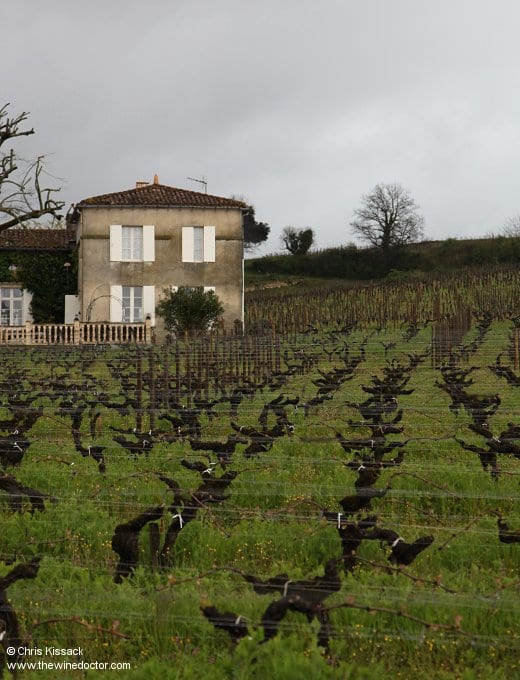Château Saint Georges Côte Pavie
The Côte de Pavie is one of the most imposing sights in all of the St Emilion vineyards, and it is also one of the most significant terroirs. As you ascend the slope the clay of the pieds de côtes soon gives way to the limestone of the plateau, the same limestone that runs around the corner and beneath the town of St Emilion and all its associated vineyards. It is into this limestone bed that the vines of Château Ausone and Château Canon are rooted, although here on the côte itself it is of course Château Pavie that we should think of first.
Towards the southern and western end of the côte the land slopes away to a more gentle incline, in both directions. At the foot of the slope and beyond there are a number of lesser but still noteworthy vineyards, such as Château Haut-Simard and Clos Badon Thunevin, while at the very western extreme, close to the road that runs up to the town, are several other châteaux of interest. The most obvious to the inattentive traveller and sightseer, on his or her way up to St Emilion to check out the monolithic church and the town’s various cloisters, is Château Moulin Saint-Georges, a property which has been in the hands of the Vauthier family, of the aforementioned Château Ausone, for many years. More easily overlooked, nestled behind Château La Gaffelière and set back from the road a little, is Château Saint Georges Côte Pavie.
Origins
It is clear that the origins of these two estates must be shared in some way, and this link probably lies in the 12th century. Having said that, viticulture was probably established here many centuries before this. As I have already documented in my profile of Château La Gaffelière, ancient tesserae mosaics (pictured on the next page, in the Château La Gaffelière tasting room) discovered here during the 1930s clearly depict the planting of vines in this region. In the vineyards of Château Saint Georges Côte Pavie similarly ancient artefacts have also been uncovered, including numerous items that date to Gallo-Roman times, as well as an old stone sarcophagus. The many finds indicate that during the 3rd and 4th centuries a villa presumably with its own vineyards stood here, straddling the vineyards of modern-day Château Saint Georges and Château La Gaffelière. Whether or not it was where Ausonius lived, though, remains controversial.

